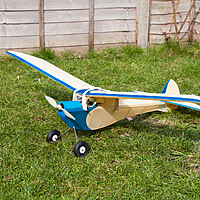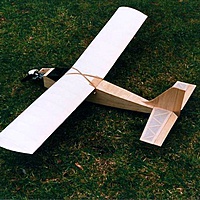Tech & Toys
-
130X New bevel gear
As I mentioned a couple of days ago, the Blade 130 had a little argument with a patio and stripped a couple of teeth from the bevel gear which feeds power to the tail rotor. Thanks to quick delivery from Fast Lad (Broken link
http://www.fast-lad.co.uk/store/) a new, upgraded metal gear has arrived.Tonight I sat down to fit the new gear and tail, this is where I made a small mistake which cost me about an hour of time, but thankfully no damage to the heli. I now know that to replace the bevel gear you can simply disconnect the swash from the head, remove a couple of screws and yank the head and main shaft straight out of the heli. I tried this, but it didn’t feel like the main shaft was going to part company from the main drive gear at the bottom. So I decided the only way forward was to separate the two chassis halves and take the shaft out that way.
[]({{ “/uploads/2013/04/photo-3.jpg” | prepend: site.baseurl }})
DON’T DO THAT! Of course does work, but it is one hell of a job. The proper way is shown in the video below, oh well it’s back together and flying OK. At least I learnt a bit about how it is all held together 😉
-
Blade 130X
Between house moving noise and a silly busy period at work, I’ve not been getting out much. The Tuc is seeing some progress in the evenings, but that has been about it. The clocks went forward a couple of weeks ago, bringing lighter evenings but since then we have had seriously strong gales. This week however we have been graced by a nice spot of low wind and sunshine.
As a result I’ve been getting out into the garden with the 130x almost daily, most times putting all three batteries through it. I’m getting a pleasant 6 mins out of the two Overlander batteries, with the charger reporting about 300/350 mAh going back in so they could be pushed even more.
Last night I had a little crash which snapped off the lower 2/3 of the tail fin, so I’ll have to order a new one and I have stripped a couple of gears on the main bevel gear which feeds power to the tail shaft. I’m going to replace it with the metal optional part (BLH3735). Even with a few teeth and the fin gone she flys just fine though!
-
Diamond Demon build – part 9
Well, I’m pleased to say that after 8 months she is finished! Weighing in at 550 grams gives me a little under 100 watts per pound, so that should be plenty for a little vintage model. I took her over to the flats today for a maiden but it was a bit too windy for me to want to chance it.
I’ve sort of fallen out of love with it over the months, it was a struggle to push myself to finish it. The covering was the final annoyance, the Litespan not shrinking enough for some of the curves, and then after I added the blue trim to the front of the fuselage I ran out of balsaloc. Being too tight to buy a new tub just for a few strips on the wings and tail I ended up painting those, which moderate success!
I’m pleased I’ve finished before starting on the next one, I don’t want to end up with a few unfinished models hanging around the place, beside which, I’ve got no space for the ones that are finished as it is 🙂
I’ll write some more once she has flown.
Right, NEXT!
-
Modelflying.co.uk forums search
This is a custom search box which restricts google.co.uk to the modelflying.co.uk/forums/ url.
If you want your own Google custom search just click here. Anybody can make one and either publish a public URL or host it on their site like I’ve done.
-
New feed location
I’m moving away from feedburner, so my RSS feed location has changed. The new url is http://riviera.org.uk/feed/ please update your RSS reader!
-
Monitoring beanstalkd with monit
A new project I’ve just deployed onto live uses the fast and lightweight beanstalkd work queue. As part of putting it into live I wanted to get at least some basic monitoring on the beanstalkd daemon. All my servers run monit for keeping an eye on processes I care about, so that seemed a good place to start.
I had a bit of a look around the interwebs but couldn’t find any examples, so I set about putting something together myself. As it turns out beanstalkd has a nice simple text protocol, detailed in protocol.txt which is included in the source, and monit has the ability to send and expect arbitrary strings to a given port. For starters I’ve set it up to issue a stats command and check for the expected response which is:
-
Jiffy!
I just discovered I have the copy of Radio Modeller where the Jiffy was given away as the free plan. I’m not sure why this pleases me as much as it does, but there you go! I’ve scanned the article and bunged it up on the Jiffy page, here.

